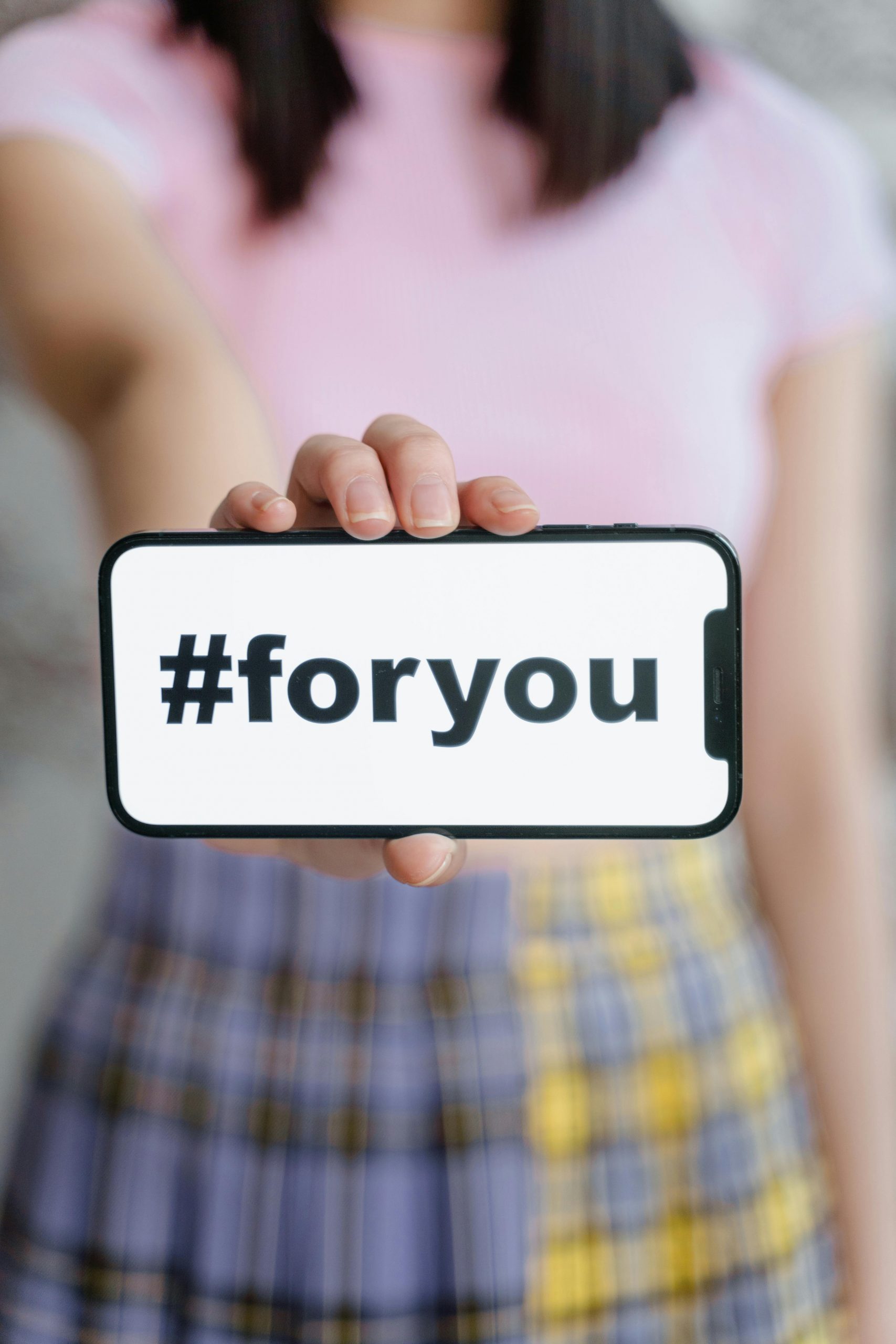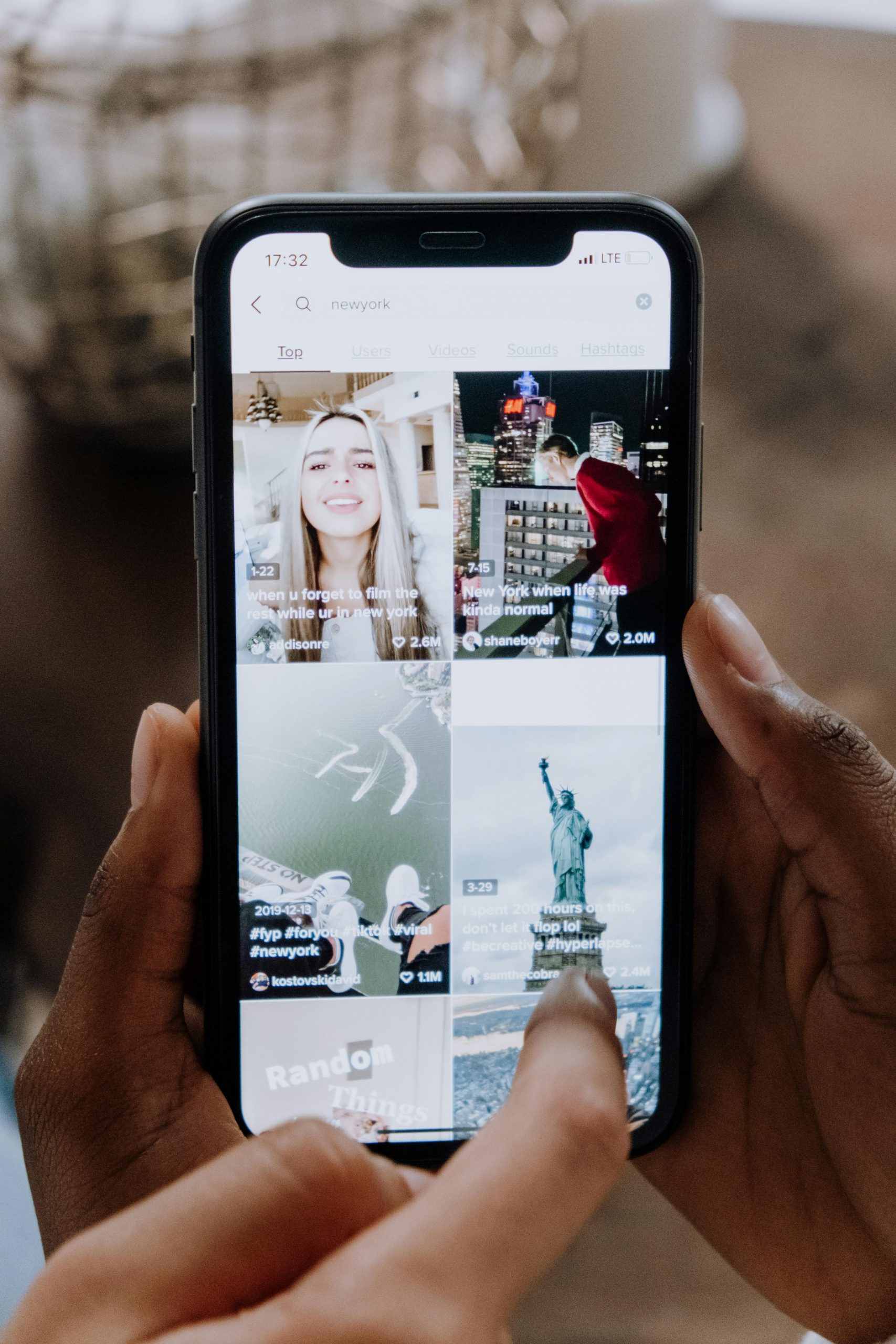
Way Beyond Search: Your Guide to Generative Engine Optimization (and SEO)
How forward-thinking brands are mastering both traditional search and AI-powered discovery to reach their audiences
The landscape of online discovery for brands and businesses has changed dramatically in a very short time. You may have perfected the art of appearing in Google search results for your company but a new challenge (and opportunity) has arisen that many businesses have yet to consider: does your brand show up when consumers ask AI assistants for recommendations?
It’s a new era of Generative Engine Optimization (GEO), where AI models like ChatGPT, Claude, and Perplexity are becoming a more important method for guiding purchasing decisions like Google did upon its ascendence 25 years ago.
The New Reality: Where Search Meets AI
As of 2025, over 20% of Americans are now heavy users of AI tools (employing them 10 or more times each month), and nearly 40% use AI tools at least once per month. Meanwhile, according to a June 2025 report by the University of Virginia, 60% of people use AI to help them shop. This isn’t a distant future trend, it is one that is happening right now, reshaping how consumers discover and consider brands and businesses.
A Quick Understanding of the GEO-SEO Ecosystem
Search Engine Optimization (SEO) is the work that goes into improving your business’s visibility through search engines like Google. This involves optimizing content for keywords, backlinks (links to your site from other reputable sites), and creating the best possible setup for your site to be read, indexed and recommended by search engine crawlers.
Generative Engine Optimization (GEO) is similar, but for AI tools instead of search engines. This involves optimizing your content and brand presence so that AI engines can easily find, understand, and cite your information in their responses. Instead of just ranking on Google, the goal is to show up inside AI-generated answers.
These approaches aren’t a “one or the other” situation, they are absolutely complementary. Far from replacing SEO, GEO complements it, providing brands and businesses with greater visibility across traditional search engines and AI platforms.
The following top three things to keep in mind will help you better prepare and implement a GEO/SEO strategy for your business:
1. AI Engines Are Still Ranking Your Content, But They Are Looking For Different Things
Google’s algorithm has evolved to prioritize E-E-A-T (Experience, Expertise, Authoritativeness, Trustworthiness), but AI engines look at your content a bit differently. They place an even greater emphasis on:
- Credibility: Is the content from recognized industry authorities?
- Structure: Is the data presented in clear, easily decipherable formats?
- Validation: Does the information appear consistently across multiple reputable sources?
- Recency / Relevance: Is it current and does it relate to the question / prompt at hand?
2. The Citation Economy Is Here
In the past, success was a first page or top organic ranking for a search term. But soon there may not even be a “top ranking.” The objective now is to become the top recommendation, which means becoming the solution that AI tools choose to recommend.
But where to start? A great first step is shifting your focus from traffic to influence. Treat AI as a trusted advocate and consider that when these tools recommend your hotel over competitors, or showcases your product in a “best of” list, consumers will take notice. Remember that these tools are aggregators, not creators, and need the information to craft their answers to consumer prompts.
3. Evolve Your Content Strategy To Stay Ahead Of The Curve
Ironically, the rise of AI means that content marketing must become much more human. It’s not about packing your copy with keywords or using the right tags on your videos, content marketing in 2025 is all about creating stuff people actually want in a way that is still discoverable by search engines AND generative engines. For GEO especially, content needs additional optimization:
- Answer-focused structure: Create content that directly answers specific questions
- Statistical backing: Include data, research, and verifiable claims
- Expert citations: Reference industry authorities and include expert quotes
- Comparative frameworks: Help AI understand how your brand relates to alternatives
How To Get Started
1. Conduct A Visibility Audit
- What are AI engines currently saying about your business across different queries?
- What are the gaps where competitors appear but your brand doesn’t?
- Where does your traffic actually come from? Check Google Analytics and track visibility on YouTube, TikTok, Amazon, and other platforms where your audience might be finding you.
2. Strengthen Your SEO Foundation
- If you don’t already have one, build a strong SEO foundation first. From there, you can layer GEO on top in a complementary way. Even with just a strong SEO foundation, your content will rank in Google and stand a better chance of being cited by AI engines.
- Review and optimize your existing hero and high-performing content with structured data and clearer formatting.
- Ensure that all of the backend and technical SEO elements like site speed, mobile optimization, and crawlability are strong.
3. Think About Authority Rather Than Keywords
- Use your brand platforms and positioning to create and share comprehensive guides and thought leadership content in your industry.
- Reevalute what makes your business special and focus on the true search intent of your audience rather than just keywords.
- Find those stats and data that are unique to your business and industry and include original research, statistics, and expert perspectives that AI engines can cite.
4. Look Beyond Your Website
- Don’t just consider your website as the only location for content and visibility. AI engines pull from a wide range of sources, not just web copy and blog posts. Consider your brand’s visibility and conversation in message board and social media discussions, reviews, research reports, and other places AI is likely to scan.
- Use PR and communications support to build and leverage relationships with industry publications, journalists and influencers who can share and cover your business.
- In this age, media tools are more important than ever before. Press releases, pitches and other ‘traditional’ forms of media relations are excellent ways to create content that these tools will recognize and use.
5. Activate Across Channels
- Find where your audience is most active and optimize your content plans to be more visible there.
- Don’t be afraid to jump in and engage in relevant online communities, forums, and platforms where your existing and prospective audiences ask questions.
- Consider emerging platforms and channels to build a presence where your competitors may not yet be active.
6. Keep Track Of Where You’re At (And Where You Need To Be)
- Develop and define quantifiable objectives like organic traffic growth, click-through rates (CTR), keyword rankings, and organic conversions to track the success of your strategy.
- Establish a strategy to track business mentions and citations in AI-generated responses.
- Conduct ongoing sentiment and accuracy monitoring of how AI engines represent your brand.
The Evins Approach
At Evins, we are now integrating GEO into our brand communications strategies:
- Strategic content development that serves both search engines and AI platforms
- Multi-platform brand building that establishes authority across diverse channels
- Ongoing monitoring and optimization to ensure accurate brand representation in AI responses
- Integrated measurement that tracks impact across traditional and emerging discovery channels
We recognize that the way consumers discover, evaluate, and engage with brands is evolving rapidly. Brand visibility is no longer just about search engines or social platforms, it’s about how your story is surfaced, interpreted, and recommended across a new wave of discovery channels. It is our responsibility to ensure our clients’ brands are not only found, but also represented with accuracy, authority, and impact in this shifting landscape through:
- Future-Proof Visibility – Beyond ranking on Google; brands are positioned to show up in AI-driven results and conversations where more consumers are searching.
- Stronger Brand Authority – By building a consistent, multi-platform presence, we help establish our clients’ brands as the trusted source within their category.
- Clear ROI & Accountability – With integrated measurement, our clients will see exactly how their communications efforts translate into visibility, sentiment, and influence across both traditional and emerging channels.
What’s Next?
The businesses who embrace this new landscape and find the most success will be those that understand discovery is a multi-platform, multi-engine challenge. This involves robust SEO and emerging GEO strategies, as well as authority-building and strategic content distribution.
By implementing both SEO and GEO strategies thoughtfully and strategically, you can ensure your business not only appears in search results but establishes itself as a trusted voice in the AI-driven conversations that increasingly guide consumer decisions.

Marketing Intelligence: What Data to Use & How to Turn It Into Strategic Gold
Marketing today can feel incredibly challenging. Customer behaviors shift seemly overnight. Competitors pivot faster than ever. New platforms and tools launch daily. But the brands that consistently outperform aren’t the ones shouting the loudest or spending the most, they’re the ones using marketing intelligence to guide their direction and approach.
Marketing intelligence isn’t just another buzzword. It’s the art and science of using the right data to make smart, timely decisions. And no, it doesn’t mean tracking every possible metric or getting buried in dashboards. It means clarity, focus and turning relevant information and insights into action. Businesses that get this right are 23 times more likely to acquire customers, 6 times as likely to retain customers, and 19 times as likely to be profitable. Not because data replaces creativity, but because it amplifies it, pointing your creative firepower exactly where it matters.
So, what kinds of data actually matter? It helps to think of marketing intelligence as a four-part system.
First, there’s customer intelligence. This is about listening to what your customers are doing, not just what they’re saying. Where do they click? What emails do they open? What do reviews and support tickets reveal? The magic happens when you go beyond reporting past behavior and start anticipating what they’ll do next. If someone views your pricing page three times and doesn’t buy, that’s not a dead end. Rather, it’s a buying signal waiting to be activated.
Then you’ve got competitive intelligence. Your competitors are running experiments in real time. Their ad copy, keyword strategies, even their job listings…all of it tells a story. Tools like to measure web traffic and stats give you visibility into where they’re investing. Social media reveals how their audience is responding. The goal here isn’t to mimic, it’s to understand the landscape and act smarter.
Next up: market intelligence. This is about zooming out to understand broader industry trends and cultural shifts. Who’s winning attention on new platforms? What’s happening in adjacent categories that could spark your next big idea? Google Trends, consumer behavior data, and even influencer commentary can help you spot the waves before they break. The brands that got in early on TikTok didn’t just follow trends – they helped set them.
Finally, performance intelligence. This is where the rubber meets the road. Are your marketing activities actually moving the business forward? Are impressions translating into leads, and leads into revenue? Good performance tracking goes beyond vanity metrics. It maps the full journey, not just the last click. That way, you see how different touchpoints all contribute to the win.
Here’s the thing: data doesn’t become intelligence until you apply context. Start by asking the right question. Are you trying to launch in a new market? Improve retention? Optimize a campaign? That goal determines which data matters. Then, establish your baseline, because you can’t measure progress if you don’t know where you started. Analyze honestly. Don’t just look for confirmation. The best insights often challenge your assumptions.
Once your foundation is solid, you can start leveling up. Predictive analytics help you spot churn before it happens. Real-time competitor monitoring alerts you when they shift messaging or drop a new product. Attribution modeling tells you what’s really driving conversions across an increasingly complex customer journey.
Of course, there are common traps to avoid. The first is data paralysis: collecting so much information that you never act on any of it. The second is confirmation bias: only paying attention to the data that supports what you already believe. And the third is perfectionism: waiting for flawless data before making a decision. Spoiler: that day never comes.
The best organizations make intelligence a habit, not a project. They hold regular review sessions, build accessible dashboards, and most importantly, celebrate when smart, data-informed decisions lead to real wins.
Want to get started? Here’s a simple 30-day plan:
· Week one: Audit your current data. What do you already have? What’s missing?
· Week two: Pick one strategic question to answer.
· Week three: Build a basic process to gather and analyze the data.
· Week four: Share what you learned and apply it to one business decision.
That’s it. That’s how you begin. Not with a massive platform rollout or a six-figure analytics tool, but with a focused question and a willingness to follow the evidence.
In a world where the market shifts constantly and the loudest brands don’t always win, marketing intelligence is your edge. It’s how you outthink, outlearn and outmaneuver the competition. And the good news? You already have more of the raw material than you think. The advantage comes from how you use it.

Considering Your Audience’s Attention Span
Time and attention is a scarce and precious resource. We are constantly inundated with content, messaging and chatter. According to a famous quote from Microsoft, you have just 8 seconds to grab your audience’s attention—shorter than a goldfish’s average attention span (which is about 9 seconds).
Want to cut through the noise? Here are some quick tips to consider to keep your audience engaged and interested. And, in keeping with the theme, they are all two sentences or less.
1. Hook Fast
A great hook stops the scroll. Think bold headlines, unexpected stats, or irresistible subject lines.
2. Say It Simply
Shorter messages are easier to understand—and remember. Cut the fluff, keep the focus.
3. Make It Shareable
Brief messages travel faster. The easier it is to grasp, the more likely it is to get passed along.
4. Lead with Value
Answer “What’s in it for me?” immediately. If you wait too long, your audience won’t.
5. Use Active Voice
Active voice creates impact. Passive voice… doesn’t.
6. Think Visually
Break content into bullets, bolded text, or short headlines. Help the eye skim and the brain retain.
7. Edit Ruthlessly
Every word should earn its place. Small cuts can lead to big clarity.
8. Add Power Words
Use high-impact words like discover, unlock, boost, save, smarter, win. They spark interest and drive action.
9. Be Specific
Skip the vague generalities. Be direct, be clear, be memorable.
10. Solve Something
Great messaging doesn’t just inform—it solves a problem. When your audience feels seen, they lean in.

Nano and Micro-Influencer Marketing for Brands: Five Essentials to Consider
Have you thought about working with influencers (aka content creators) for your business, but have no idea where to begin? Maybe you’ve seen a highly visible partnership between a social media personality and a brand in your industry, or are just looking for third-party content to share with new audiences? You are not alone.
Shopify shared that 84.8% of brands surveyed found influencer marketing effective, and Marketing Dive found that 81% of consumers embraced influencer marketing in the last year, so the proof is there. But there is also a misconception that you need the GDP of a small country to play in the space, which couldn’t be farther from the truth. Let’s talk about what brands and businesses need to know about influencer campaigns, how to get started and what to do to provide the best opportunities for success.
Let’s be clear – Gigi Hadid is not in the cards for most brand content creator partnerships, and that’s fine. For most companies, an approach including nano and micro-influencers will be much more affordable, easier to manage and effective overall.
Sprout Social defines nano-influencers as those content creators with between 1,000 and 10,000 followers, and micro-influencers as those with between 10,000 and 100,000 followers. Content creators in this category have significantly less followers but often have much higher engagement rates and overall buy-in from their followers. But before you reach out, consider the following essentials:
1. Understand Their Audience (And Their Audiences’ Willingness To Take Action)
There are many reasons why people follow others on social media, and not all of them are because they fully respect the person and value their opinion – ask any politician. A little first-hand research is all it takes to determine if that skateboarding pro has 80,000 followers willing to follow her anywhere or 5,000 bored and disinterested followers and 75,000 bot accounts.
First, ask any content creator for their metrics. Any influencer who is looking for brand partnerships will already have this ready. Is it going to offer the most unvarnished truth? Probably not, but it will provide some stats as well as insight into how the content creator tracks their audience and engagement.
Next, review their posts and see how many likes or comments each gets in relation to their total followers. On Instagram, for instance, to calculate engagement rate just sum all engagements (likes, comments, shares, saves) for a post and divide by the total number of followers, then multiply by 100. You can also use an influencer management tool like Klear to gather this information.
2. Is Their Content Quality Up To Snuff?
This one is simple – do they post attractive, engaging content that is appropriate for your brand? If not, look elsewhere. Like any other creative avenue, what works for them as a content creator may not work for your business.
3. How Much Say Will You Have?
In the excitement of establishing a partnership brands and businesses often forget to discuss their vision and needs for a campaign, only to find out much too late that the influencer has their own thoughts that do not align with those of the brand. To avoid this, it is very important to have a conversation upfront about what input your business will have throughout the creation and posting process, as well as your veto ability for ideas that don’t gel with your approach. This is also an important time to discuss deliverables, and exactly what you can expect in terms of quantity of posts and where they will be posted, as well as your future usage rights for any content.
4. The Importance Of Compliance
The Wild West days of influencer partnerships are over, and departments like the FTC in the U.S. are cracking down on compliance. What does this mean for you? It means finding a content creator that is well-versed with the rules and willing to play by them. This includes agreeing to disclose any material connection between the brand and the influencer — payment, free product, discounts, affiliate commission, trips, etc. Additionally, clear and transparent language is best, and avoiding any unsubstantiated or misleading claims is of the utmost importance.
5. What’s The ROI?
Finally, the most important consideration – what are you getting out of the partnership? Visibility campaigns are easy to track, and upticks in website visits, share of voice, engagements and follows on social media are great indicators. For those looking to sell more product or services, this can be harder to quantify. Consider dedicated landing pages, special codes or other ways to track the performance of the collaboration. Also, remember that the more complicated or time-consuming the ask is for consumers, the less likely they are to engage – so keep it simple!

AI-Powered Personalization: What You Need to Know
As we have discussed in previous newsletters, a consistent message is crucial to best connect with your target audience. But messages are often the ‘big ideas’ – the overall approach for your product, service or destination – rather than the details. Consider a hit song. Although it is enjoyed by a large audience, some are drawn in by the melody, some are attracted to the lyrics and some appreciate the musical elements and instrumentation. They are all hearing the same overall ‘message’, but the hook for each is more personal.
In this week’s issue, we are looking at personalization, specifically how AI can help you create a more customized experience for each consumer, as well as some watchouts before implementing your newest strategic approach.
According to IBM, AI personalization refers to the use of artificial intelligence (AI) to tailor messaging, product recommendations and services to individual users. By analyzing data and learning from user behavior, AI-powered tools can create highly personalized encounters that enhance customer experiences and increase customer engagement. Recent advancements in AI technology, such as generative AI, have enhanced marketing practices by generating personalized experiences in close to real time. These advancements are ushering in an era of omnichannel hyper-personalization—a customized and seamless customer experience across platforms that responds to customer behavior immediately.
Not only have customers become accustomed to this experience, in many cases they are coming to expect and rely on it. Think about your saved shopping carts when you return to a retailer’s website after deciding to buy that outfit, or how our online searches are augmented by our location, previous searches and personal tastes to provide the most relevant results. This is all accomplished using AI, and it is only becoming more prevalent.
But you aren’t J Crew or Google, how can you take advantage of these tools to provide a stronger customer experience? Here are some tips on your best next steps.
1. Better Understand Your Customers
As you have heard from us time and time before, it’s vital to listen before you speak. When it comes to personalization it’s impossible to begin without understanding your customers.
A sentiment analysis is a great way to understand the broad likes and dislikes of your audience. In fact, even if you aren’t personalizing your approach, you’d be well served by regularly checking on the sentiment around your brand, its offerings, your competitors and your industry. Topline analyses can be done through any digital listening and social monitoring tool (Quid, Meltwater, Sprout Social), or you can search out companies who can take a more in-depth look.
If you are already using a CRM platform or an e-commerce tool to reach customers, you should already have access to insights that can be used to develop predictive insights for your customers. This is as easy as looking at how long it takes for a repeat customer to deplete and reorder your product and automating email notifications to remind them and ensure the purchase. This type of data is the tip of the iceberg for personalization.
2. Personalize Your Outreach
As mentioned above, arming yourself with insights is the first step, and many of the tools that you already use are likely already gathering these for you. Look at what specific customers open, react to and respond to, and separate these customers into groups. These groups correspond to different aspects of your customer base (remember the words, music or melody people?), and will respond better to more personalized messages. By understanding their browsing and purchase habits, you can reach them at the right time with the right message. This can be accomplished by email, social media or even through digital advertisements and direct mail.
3. Customize Your Content
In addition to personalizing your outreach, one of the best methods to capture customer attention, engagement and revenue is through dynamic content. This involves creating customized landing pages (or even modifying your entire website) to show customized messages, products, offers and experiences to specific customers. This is increasingly easy to accomplish with today’s technology, so speak with your website company or investigate your options for creating dynamic owned content to better encourage customer action.
4. Prioritize Loyalty
New customers are great, but the cost for acquiring a new customer is between five and 25(!) times more expensive than retaining an existing one, according to studies. The best way to keep existing customers engaged and involved is through loyalty and rewards programs. This doesn’t have to be a discount program, but by identifying your top customers, you can generate special opportunities, offers and not only drive repeat purchases, but also encourage advocacy and sharing.
5. Focus on Customer Service
Customer service is hardly specific to this topic, but AI does allow businesses to add additional tools such as website chatbots, alerts for sudden sentiment change and even social media keyword and topic identifiers based on location (especially helpful for hotels and entertainment venues). Whether it is being done with the latest tools, the old-fashioned way, or some combination of the two, never forget the value of good customer service.
Finally, A Few Watchouts to Consider
All of this sounds great, doesn’t it? Before you jump in headfirst, however, consider a few things. First, do you have the staff or resources to effectively manage these campaigns? It may be increasingly automated, but it is still important to have someone overseeing and managing your customer approach. Plus, it is worse to start and then suddenly discontinue a strategy due to lack of resources versus waiting to jump in when you are sure you have the tools to succeed.
Additionally, remember the old luxury hospitality adage that “high touch beats high tech”, so don’t implement a new tool or chatbot if you can provide (or your customers expect) a human element. Some people are still resistant to AI, and it is not the best choice in all situations, especially if it has the potential to anger or confuse your audience.
Finally, make sure your data is accurate and that you aren’t acting on incomplete data or incorrect insights. When in doubt, identify an insights company that can ensure that the data you are analyzing is correct and that the intelligence you are using is current and appropriate for your audience.

The Value of An Omnichannel Approach in 2025
The idea behind omnichannel marketing is nothing new. What has changed however, is the sheer number of channels available to businesses for communication. Gone are the days of single platform campaigns, as brands need to reach their audience where they live, which is increasingly spread between multiple social media platforms, apps, websites, publications and streaming/broadcast channels. In fact, recent studies show that 73% of consumers switch between at least three channels during their journey. And according to Forbes, omnichannel campaigns generate 3x more engagement than single-channel efforts, and it makes perfect sense, consistent messaging increases reach and impact.
But what do you need to do to develop a winning omnichannel approach that stands out among your competitors and captures the attention of your audience? Keep reading, and we will share our recommendations.
Wait, What Exactly Is Omnichannel Marketing?
The term refers to a strategic approach that provides a seamless, consistent customer experience across multiple channels, platforms and touchpoints. By integrating online and offline channels, brands and businesses can ensure that customers have the ability to interact with their brand in a unified way, regardless of the platform or device they use.
Omnichannel marketing campaigns have a 250% higher purchase and engagement rate than single-channel campaigns and a 30% higher lifetime value to brands across online and offline channels. Additional benefits include enhanced customer engagement, better customer retention, stronger customer relationships and a higher perceived value for your business.
Focus on the Customer Experience
You know your business, and which channels your audience best respond to and engage through. But there is an opportunity to reach more prospective customers and curate a larger conversation by incorporating other channels as well. This can be as simple as expanding your social media focus from Instagram to more ‘traditional’ channels like Facebook or experimenting with email marketing or even physical mail to communicate with your audience. Not all customers are active on the same channels, and even those that use many different ones may not see all of your communications, leading to missed opportunities that can be frustrating for your brand and for your customers. With a more omnichannel approach, you can maximize campaign awareness and participation from a larger portion of your customer (and prospective customer) base.
Make it Seamless!
How many times have you seen an interesting product in a store or through an ad and then seen it on social media, an article on your favorite website and then a search engine ad before you finally purchase it? It’s happened to all of us, and it highlights the need for brands to diversify their efforts to encourage trial and purchase.
In marketing, the “Rule of 7” is a common guideline, which suggests that people need to see a message at least seven times before they remember it or take action. Among the elements that encourage recall and action are repetition, emotional impact, clarity, simplicity, personal relevance and channel diversity. Through a seamless channel approach, you are sure to attract more attention and assist in customer recall in a crowded marketplace.
Use Data to Your Advantage
One of the benefits of an omnichannel approach is the opportunity to collect and utilize customer data to further reach your audience with the messages they want to receive. This can be general customer data on what types of content resonates and what does not, or even the ability to build distinct profiles of your customers to personalize the experience even more.
Using a CRM (Customer Relationship Management) service or software to collect, store, manage and act upon the customer data is a great approach. Furthermore, it’s always a great idea to look at what else your customers are discussing, sharing and purchasing for insights into future collaborations, campaigns and approaches for your business.
Omni vs. Multi
Some of you may feel as though you’ve already embraced omnichannel marketing, but it is easy to confuse it with multichannel marketing, which also involves the use of multiple channels, but in this approach each acts separately, with individual campaigns, objectives and communications.
An effective omnichannel strategy creates a unified campaign for greater success. As an example, say a customer finds an interesting brand and visits their website. While browsing, they leave an item in the cart and go about their day. With omnichannel, that customer will receive an email reminder about the product left in the cart, as well as personalized banner ads and possibly even a mailed catalogue highlighting the items they browsed on the website. Through the power of using these channels together, the potential for higher conversions and better customer engagement are easy to see.
What You Need to Get Started
The best part of embracing omnichannel is that most brands already have most of the assets needed. For more in-depth campaigns you can seek the assistance of digital marketing, direct marketing and communications companies, and it is helpful to have a strong CRM in place to manage the data, but testing the waters with an ‘abandoned cart’ campaign or an email campaign tied to your social media is an easy way to see results fairly quickly. So don’t be afraid to embrace a unified channel approach, and best of luck with that new campaign!

Building A Winning Earned Media Strategy
In the ‘Age of Content’ most brands and businesses have no shortage of things to share with their audiences. What is important, however, is making sure that you are sharing the right updates and information with the correct audiences, and this is where a media strategy becomes so important.
Today, we’re looking at how to organize your brand and business announcements, how to schedule your ongoing flow of information, how to make the most of earned media as a channel and what a successful campaign looks like.
Since the rise of social media nearly two decades ago, there are now more channels for brands to communicate through than ever before. Earned media, which consists of print, broadcast and online coverage from reputable media outlets, has become even more important in determining credibility, driving awareness and influencing purchase decisions. Recent studies confirm that 92% of consumers trust earned media more than paid media, and in a word where consumers are inundated with advertising, earned media coverage plays a more important role in cutting through the clutter than ever before.
But how does a business make the most of earned media in today’s marketing and communications landscape? We have five things to consider when crafting your media strategy.
1. Learn What Interests Your Prospective Media Outlets
We all hate spam in our inboxes. Even if it is a site we love or something we may have signed up for, incessant emails from companies are a surefire way to put a bad taste in our months as consumers. Journalists feel the same way about pitches. The best way for a brand to build a relationship with a media outlet is to understand what types of stories they cover, how they prefer to receive information and to whom to send it.
All too often, brands and businesses spam media outlets with pitches that are not appropriate for that outlet or not of interest. This means when the brand does have something appropriate to share with that outlet, it will most likely go ignored. Want to avoid this? Easy – do your research.
It may take a little more time, but understanding what an outlet is looking to cover, what stories they find most interesting and the appropriate person to share those stories with is more than half the battle. In return, journalists will see you as a valued resource rather than a nuisance, your business will build credibility and relationships with key journalists and you’ll see more regular coverage from the outlets that matter to you.
2. Choose Your Stories Wisely
At Evins, we sometimes must take a blunt approach with clients when it comes to news and announcements that they would like to share. Yes, business growth is exciting and many milestones deserve recognition and celebration. But that does not necessarily make them worthy of media pitching.
When choosing a story to pitch to media, ask yourself if this is something that would excite an average consumer of your business. If the answer is no, it is probably not worth pitching that mainstream lifestyle outlet. That doesn’t mean it doesn’t have its place as trade industry news or on your brand’s website or social media but save the lifestyle media pitches for stories that have broader appeal.
Another thing to consider is what story would have the most impact in that outlet. Many outlets won’t feature a brand soon after recent coverage, so you don’t want to miss your chance sharing a story that is perfect for that publication’s audience.
3. Create An Editorial Calendar And Stick To It
The best way to avoid the above scenario with an outlet is to create an editorial calendar. With this, you have a roadmap that you can use throughout the year to schedule announcements and story pitching, create ideal outlet lists for each story, and ensure that everyone communicating on behalf of the brand knows the current status of outreach.
We recommend using a shared document that updates in real-time so that updates can be made, additional story opportunities can be added and team members can collaborate on prospective pitches. After all, not all stories can be planned months in advance, and you want the ability to jump on trends or current topics as well. The key is to make sure that in your eagerness for coverage, you aren’t affecting a bigger opportunity in the near future.
4. Use Exclusives To Your Advantage
So your company has a big announcement planned, and you want to make the biggest splash possible with media. Don’t always start with a press release on the wire and consider offering an exclusive instead. Especially if you have been building goodwill with journalists and outlets, providing them with the opportunity to “break” your story for you will go even further to build a stronger relationship and may bring even more attention to your news.
Just remember to be very selective in offering your exclusive, give each outlet a chance to respond before going to another and ensure that you give their story time to publish and grow before you share the news further yourself.
5. Track Your Results and ROI
With all of the tools at our disposal, many businesses still go for the prestige factor when it comes to press coverage. Sure, it is great to see your brand on the cover of that legacy lifestyle outlet, but that doesn’t always equate to results.
The best media strategies consider all channels – from broadcast to print and online, and balance the ability to drive widespread awareness while also using outlets to drive direct sales and more immediate actions. By tracking the results of your media efforts, you can see what is moving the needle, and what outlets drive the most conversation, action and conversion, as very few accomplish all three. By having the data to review, you can continue to tweak and perfect your approach to make the most of earned media coverage and grow your business.

Is Viral Marketing Dead?
It’s something we’ve heard from clients for nearly two decades now: “Can we make this go viral?” But is viral marketing dying in the wake of other promotional approaches? It’s not a simple answer, but we’re diving in this month with the answer, as well as some suggestions on how you can make your campaign as successful as possible (and maybe even go viral). Enjoy, and as always, share this with someone if you find it valuable and be sure to reach out with any questions, comments or suggestions.
Is Viral Marketing Dead, Or Has It Just Mutated?
At the advent of social media marketing, many experts proclaimed that visibility and attention would finally be democratized and that small businesses would have the ability to compete for awareness and engagement based on the merits of their creativity and strategy, versus the depth of their pockets. Viral marketing was at the center of this discussion, and we saw early examples of how viral marketing could drive insane amounts of visibility and drive preference and purchase for emerging brands.
Nearly 20 years later, we still talk about viral marketing, but we see it a lot less as a cornerstone of brand plans and know all too well that paid content and online advertising have usurped many organic promotion methods for brands, clawing back the ‘democratization’ and again bringing the depth of those brand pockets back into the conversation. But is there still room for viral marketing as a strategy? The answer is a resounding “maybe”.
Who can forget some of the most successful viral campaigns of the past? From brand campaigns like the launch of Dollar Shave Club to the rise of the ALS ice bucket challenge, both for-profit businesses and charities used the power of the internet to drive visibility and increase awareness to drive revenue. But for every success story, companies and organizations started to see the dark side of viral campaigns. In their great overview on viral marketing, Sprout Social lists some of the pros (increased awareness, increased revenue, audience growth, being an “it” brand) as well as some of the cons (losing control of brand messaging, increased noise and chatter, fans don’t equal customers), which is worth looking into.
The Pros and Cons of a Viral Campaign #1: Increased Awareness and Audience Growth
What brand or business doesn’t want more awareness? More attention means a more receptive audience for your products or services, as well as better organic recommendation and advocacy networks, right? Brands with successful viral campaigns did see these benefits, but also quickly found out that a swift rise in visibility, especially around a single campaign that may not adequately communicate the full breadth of the brand can lead to messaging issues, as well as a lot of noise from people who don’t quite understand your brand (and have no desire to learn).
The Pros and Cons of a Viral Campaign #2: Increased Engagement and Noise
In addition to a larger audience, brands behind a successful viral campaign can also expect a dramatic rise in engagement. This means more mentions on social media, more emails, more requests, more EVERYTHING. Of course, this can be incredibly helpful in growing a business, but it can also lead to a lot of noise and headaches in a very short period. Think of some viral moments recently – who didn’t have an opinion on that Australian breakdancer, even if they didn’t watch a minute of this year’s Olympic Games. How about the NFL? Has Taylor Swift helped or hurt their brand? That is yet to be determined, but a lot of people are talking about the sport and are probably not tuning into a game or buying a ticket.
The Pros and Cons of a Viral Campaign #3: Increased Revenue (Maybe)
With more fans and followers usually means more customers, but when it comes to viral campaigns that correlation is unclear. As mentioned previously, people with opinions and a desire to talk about a cultural touchpoint don’t necessarily mean they are willing to open their wallets. Audience development is so important for exactly this reason – all the brand awareness in the world doesn’t mean anything if the audience isn’t a prospective customer, and nowhere is this truer than with the rapid audience gains brought along by a successful viral campaign.
So, What’s the Verdict?
Short answer: No, viral marketing is not dead. But it is rarely the centerpiece of a campaign. Most brands and businesses will benefit much more from a word-of-mouth (WOM) approach versus chasing a viral reaction. WOM marketing operates similarly to viral campaigns, and some can even go viral themselves, but these campaigns are more targeted to existing audiences and are not designed to elicit as wide of a response. Because of this, the noise and chatter is not as great even with a successful campaign, and the brand has less likelihood of losing the messaging thread due to the public taking the campaign and running with it.
Furthermore, many brands are looking to connect with their core audience more than the fringes of their consumer groups, so unless your product or service is truly designed for everyone (CPG brands like soap or toothpaste, or insurance companies) who need to reach as many people as possible, it is more effective for brands to speak more intimately to their top consumers, and provide them with the information and messaging to share with their friends and family. For those brands that are seeking a wider audience, paid marketing is usually an easier option. Recently we have seen more ‘viral’ type creative in paid marketing (think of most Super Bowl ads that use humor to try to drive conversation), but it is hard to consider a popular multi-million-dollar advertising campaign as a ‘viral’ one.
Viral content usually meets the criteria of being A) Entertaining, B) Creative, C) Valuable and D) Thought Provoking. Introducing these criteria into your campaigns is never a bad idea, even if ‘going viral’ isn’t your objective. Regardless of how popular your brand campaign becomes, using the opportunity to better connect with your consumers should always be the number one objective. After all, viruses die sooner or later, but the impression that they leave is what remains.

Making the Most of Digital Listening and Conversation Monitoring
Chances are good that you have heard the terms “social listening”, “conversation monitoring”, “digital listening” or “social monitoring” before, and likely you fall into one of two camps: those who have incorporated these methods into your brand and industry monitoring – or those who still have no idea what these terms mean.
We get it, it can get confusing, but understanding and implementing approaches to better understand the conversation around your brand and its industry landscape and audience is more important than ever. Whether you are new to these terms or think you already have a good handle on your approach, have a look at the Evins take on things and come away with some new tips and recommendations that are sure to boost your listening and monitoring game.
First things first – what is social listening or digital listening? Sprout Social has a good definition in a recent post where they define social listening as “the process of analyzing the full spectrum of conversations around your industry, brand, and any topics relevant to your brand to understand your audience better and improve your campaign strategy”. This differs from social/digital/conversation monitoring, which usually just applies to your brand and those discussing it directly. Starting to see why this is so important?
Listening allows brands to better understand the industry and audience landscape that their brands operate in every day. This provides better insight into what competitors are doing that is working (and not working), what consumers want from brands that they are not getting, and what people love about your brand (and brands like yours). There are many ways to comb through and explore this data, but below are some great ways to use conversation to better direct marketing and communications efforts.
All Feedback is good feedback – and all of it is actionable.
We’ve all experienced the schadenfreude of watching a key competitor make a public misstep and get dragged through the mud because of it. But don’t be so quick to bask in the glow of their misfortune. Most situations like these have important learning opportunities attached that should not be ignored.
Look into what caused the problem and see if it is a problem that could be applied to your brand as well. Sometimes a brand or business is singled out for the practices of an entire industry, and while the shaming is reserved for them, the practices that caused the uproar are not unique to their business alone. Use this opportunity to review your practices and see if you can do things better. And even if it is not a practice that applies to your brand, watch how conversation and outrage build through conversation (especially on social media) and note how effective brand communications can help address it, and how ineffective brand communications can make it that much worse).
Not all brand conversation is 100% serious – but it all shines a light on how your brand is perceived
Especially with the advent of social media, people can share their thoughts about brands with a wider audience than ever before, and those brands are wise to listen. That doesn’t mean that every off-handed comment should be addressed to the highest degree; sometimes people just want to complain or make a joke at a company’s expense. But it is important to watch your brand sentiment and see if the volume of comments like these is increasing around your business. It could be a portend of changing perception or a red flag that you need to change some of your approach.
Pay attention when you AREN’T tagged in the post
In addition to the wider audience provided by social media, consumers also have unprecedented access to brands themselves, and how they use this (or don’t) can be extremely telling. With the rise of visual platforms like Instagram and TikTok, aesthetics is more important than ever, and consumers use brands for cache and identity. It is why you will see certain brands showcased and tagged in so many posts – they act as a signifier. But if your brand is not being featured or is being featured but not tagged, this can be an early warning that either your brand is not worth bragging about, or that the consumer sees no value in tagging you in their post. Use this as an opportunity to engage and gauge the reaction and interactions. It will help build brand loyalty and show that you are active on platforms where the conversation around your brand is happening.
Use data to establish actionable insights, but don’t just act on data without understanding
With access to so many data points, brand stakeholders are inundated with different information to the point where it can be extremely difficult to determine what deserves attention and what doesn’t. That’s why you must understand the difference between static data that may be a blip or anomaly versus a trend or learning that requires a change of course. It can often be difficult to tell the difference, and developing insights from an avalanche of data can be a challenge. Some brands hire a person to handle this type of work internally, and others look to agencies to help them better understand the brand and industry landscape, but regardless of your approach, make sure you are not ignoring important information, or putting too much stock in data that doesn’t matter.

How to Create A Winning Brand Partnership
“Alone we can do so little; together we can do so much.” — Helen Keller
Partnerships for marketing purposes are nothing new. From the earliest marketplaces in the ancient world where merchants set up adjacent stands selling complementary goods to the latest streetwear company partnering with yet another luxury brand, partnerships are everywhere. The reason is simple – a successful brand partnership increases brand recognition for both parties, drives sales and grows customer loyalty.
But what makes a successful brand partnership?
We’re looking at the who, what and how of the most impactful partnerships, and what your brand or business can do to drive your winning collaboration.
Who Makes A Good Partner?
When it comes to developing an effective partnership, brands have a lot of options. From individual influencers to like-minded brands, charity organizations or events, there is no shortage of opportunities for both paid and unpaid partnerships. What is most important, however, is determining whether the proposed partner’s audience is appropriate for your brand.
The most successful partnerships consider the end consumer first and foremost. This means that the consumer either already is (or should be) a fan of both brands and that the partnership is natural and compelling to them. For example, as much as you may love your toothbrush and your car, a partnership between Crest and Tesla may not be in either brand’s best interest.
When looking at partners, brands must consider not only their current audience but their past as well. This means considering any scandals, past or current partnerships that may conflict and even upcoming projects to ensure that the partnership is a good fit. The worst partnerships tend to stick in the minds of consumers, like the Kendall Jenner and Pepsi collaboration.
In short: Do your homework before making the final decision.
What are the Best Types of Partnerships?
Much like any relationship, brand partnerships can range from casual flings to committed connections. Some can occur on social media only, while others can extend to print and broadcast, out-of-home advertising, events and much more. The key is determining what you want to accomplish, how big of a story the partnership is and what your budget looks like.
For small campaigns, a social media partnership with a targeted micro-influencer can often be arranged with a small budget, or even just through product gifting. This may be all that it takes to gain visibility for the brand among the target audience that follows the influencer while providing valuable cache and credibility for the influencer.
For larger campaigns, an event sponsorship or charity affiliation creates an ongoing opportunity to raise visibility and engagement with both parties, leading to content-sharing opportunities, media coverage and possibly a strong customer call to action. All are great ways to drive success through partnerships.
The most visible option is a co-branding partnership. This usually results in a product or service offering that bears the names of both partners and is promoted to each audience and a larger consumer base as well through the strength of the product or service. This category includes famous examples like Doritos x Taco Bell, GoPro x Red Bull, Dior x Nike Air Jordan and Missoni x Target. This type of collaboration showcases a specific product or service offering and compels consumer conversation and revenue. Like a good peanut butter and banana sandwich, the best brand collaborations are delightful while being a little unexpected as well.
How to Develop the Best Partnership Strategy
By this point, the gears should be turning and your partnership plan to end all partnership plans is already being developed in your mind. But pump the brakes there for a second, and make sure you are considering the five most important elements of a successful brand partnership:
1) Does the partner’s audience align with our audience (or one we’d like to reach)?
2) Do we possess shared values and identity elements that make for a natural partnership?
3) Can we create something exciting for our audience?
4) Are our goals and expectations aligned?
5) Can we be successful with the budget we have to work with?
If the answer to all of these questions is yes, then don’t let us stop you from creating the brand partnership of your dreams! But for those who need a little help, there are agencies and resources out there to help, so don’t feel the pressure to do it all yourself.

Evins Communications Realizes Significant First-Half Growth In 2024
Agency wins clients across food, wine, spirits and lifestyle sectors
NEW YORK, July 10, 2024 – Evins Communications (“Evins”), a New York-based marketing communications and public relations agency known for delivering innovative programs with business-changing impact, achieved notable new client growth in the first half of the year, exceeding expectations. The Agency, along with its Teuwen division, proudly welcomed AVE by Korman Communities, Connect the Dots Collective, Jos. A. Magnus & Co., Coppercraft Distillery, Fox & Oden, Flying Ace, Thatcher’s Organic Artisan Spirits, Farage Cioccolato, Klocke Estate, The New York Wine & Grape Foundation (NYWGF) and Stag’s Leap Wine Cellars.
“We are so excited to work with these incredible organizations,” said Jacqueline Long, President, Evins Communications. “They share our vision for building brands by combining disruptive creativity with personalized experiences, informed by technology.”
Evins has been tapped by these businesses to provide marketing communications services including media relations, brand positioning, social media strategy, awareness-building campaigns and influencer programming, among other agency proficiencies.
“As a growing real estate brand, we intentionally sought a partner who understood hospitality brands as we continue to expand our national footprint, and Evins immediately connected with our unique vision and service,” said Ashley Cerasaro, SVP Communications, AVE. “Their team quickly rolled up their sleeves and did extensive research on our brand and markets. We are looking forward to a long, mutually beneficial partnership.”
AVE specializes in elevated apartment living, pioneering the hospitality approach to residential real estate. Fully furnished and contemporary unfurnished apartments are available at 14 communities across six states (and coming Fall 2024: AVE Santa Clara and AVE Paradise Valley). Evins is responsible for building overall brand awareness and visibility through both national and regional media relations, as well as new property launches.
Connect the Dots Collective is an all-female brand innovation company offering an exclusive integrated approach to marketing, sales, public relations, new product development, eCommerce and digital innovation for legacy and new proprietary wine, non-alcohol, adaptogenic, and CBD/THC beverage brands. Evins is leading their communications strategy, including media relations, thought leadership positioning, and new product introductions.
Evins first began working with CraftCo on a project basis with their flagship whiskey portfolio, Joseph A. Magnus and was subsequently engaged to work on their entire portfolio . Based in Holland, Michigan, the brand’s portfolio of award-winning craft brands includes Coppercraft Distillery, Fox & Oden, Flying Ace and Thatcher’s Organic Artisan Spirits, in addition to Joseph A. Magnus. Evins has launched a brand and portfolio marketing communications program to drive awareness, engagement and trial through media relations, influencer relations, brand partnerships and trade initiatives.
Farage Cioccolato, the Milan-based brand renowned for its artfully designed chocolates, teas, jams and porcelains, is known for unrivaled quality and enchanting design. The brand engaged Evins to redevelop and relaunch the brand internationally through a comprehensive marketing communications program that includes brand strategy and positioning, brand expansion and brand experiences, events and promotions, website redesign and e-commerce expansion, media and influencer campaign, and social media strategy.
Sitting on 160 acres of vineyards and orchards, Klocke Estate offers an immersive distillery experience coupled with exceptional earth-to-glass brandy and terroir-driven menu offerings. The Estate, located in New York’s picturesque Hudson Valley, engaged Evins to provide media relations, influencer relations, social media and brand partnerships.
The mission of the New York Wine & Grape Foundation (NYWGF) is to promote the world-class image of New York grapes and wines from across the state to responsibly benefit farmers, producers and consumers. This spring, Teuwen launched an integrated communication plan to authentically connect New York Wines with consumers, media and trade through media relations, social media initiatives, trade and consumer promotions.
Stag’s Leap Wine Cellars, the legendary Napa Valley winery whose Cabernet Sauvignon was awarded the highest honor in the red wine category at the 1976 Judgment of Paris, continues to cultivate perfection with precise viticulture and forward-thinking winemaking practices. Teuwen, who began work with the brand in March, has developed a comprehensive communications program to engage media as well as trade and consumers, and bring the storied brand to new audiences.
“The wine expertise of Evins Communications’ Teuwen division, characterized by a successful track record of transforming the marketing landscapes for previously under-appreciated regions, stands as a beacon of potential for us,” said Sam Filler, NYWGF Executive Director.
Since its inception in 1987, Evins has operated at the intersection of communications, culture and community, developing a reputation for impactful work. The Agency’s philosophy is rooted in the belief that hospitality is an ethos transcending an industry and that personal, culturally relevant experiences are what drives brand building. The continued expansion of the agency’s portfolio, as well as the acquisition of Teuwen in 2023, reinforces the effectiveness of its approach to public relations and furthers the expertise and offerings in the wine and spirits industry.
###
About Evins Communications:
Evins Communications is an independent marketing communications agency with an established track record for providing consequential business strategies and success for leading beverage, hospitality and lifestyle brands. For over 35 years, Evins has developed PR campaigns that drive conversation, build communities and spark change by breaking barriers to help clients achieve results for their businesses and for the better good. For more information, please visit www.evins.com.
About Teuwen Communications, An Evins Communications Company:
Teuwen is an award-winning wine and spirits public relations and marketing group with insight and influence. A collaborative and creative team of industry experts with authentic media, trade and influencer connections, Teuwen produces personalized, strategic and integrated programs with powerful results. Teuwen’s capabilities, expertise and knowledge are amplified by the enhanced reach, resources, and experience of Evins. For more information, please visit www.teuwen.com.

Setting Expectations: The New Breed of Metrics and How You Should Be Measuring Success
Long gone are the days of relying on metrics like circulation and advertising value equivalency to measure the success of PR efforts. Metrics like these may still have their place in some instances, but technology and tools have made for big advances in finding the most informative key performance indicators (KPIs). Here are five that you should be paying more attention to as a brand or business.
Earned Traffic
The ultimate goal of public relations is to compel action and earned traffic measures how much website traffic that coverage is driving for your clients. By sharing access to GA4 (the latest Google Analytics for websites) with their agency, businesses can learn more about what media coverage is doing for their company – and how to measure success. Earned traffic is just the tip of the iceberg, and using metrics like conversions, leads generated and returning visitors can also be used to track the customer journey from introduction to purchase.
Share of Voice
It seems so obvious, but many brands don’t even know who their competitors truly are, let alone how to track their success against them. One of the easiest ways to take the pulse of your success in the marketplace is a share of voice analysis. Conversation leads to purchase, and brands being discussed are brands being considered, so understanding your share of voice versus competitors is a great way to track what campaigns are resonating and creating buzz – and which are falling flat.
Brand Sentiment
One of the more ‘classic’ metrics on this list, sentiment is still not taken as seriously as it should in the analysis and monitoring department by many brands. Understanding the most sentiment is neutral, many companies use sentiment solely to track negative mentions that need attention (if they track it at all). There is a huge opportunity to use all sentiment to see what is resonating with your customers, what they’d like to see more of and where you may be creating friction with your audience.
Keyword and Message Permeation
One of the metrics that Evins often uses that clients don’t usually consider is message and keyword permeation. If we draft a pitch or create a campaign angle to share with media, influencers or the general public, one of the best ways to track if it is resonating with those audiences is to check against the words and phrases to see how much they are being used in online conversation and media coverage. In fact, this can sometimes show which parts of a campaign are working and which are not, allowing for a quick pivot to optimize success.
Engagement Rate
Much like message permeation, one underutilized way to measure success is through engagement rate. For over a century, PR success has been measured by awareness, but that was only in the absence of access to data confirming action being taken by an audience. With modern technology and tools, we have more data than ever before and tracking the percentage of the audience that is engaging with your content and media coverage as well as how they are engaging (and what actions they are taking) is an amazing indicator of the potential ROI of a program or campaign.
These five examples are just a few ways to track success, and depending on the product, service or industry, there are sure to be many more that you can use to better track the success of your campaigns. What are some metrics that you can’t live without? Let us know by email or through social media!

What to Know About the Relationships Between Media Outlets and A.I.
In late May, Vox Media and The Atlantic announced a deal with OpenAI, the latest media companies to announce agreements to establish content partnerships with the companies behind this emerging technology. OpenAI alone has recently signed deals with News Corp (The Wall Street Journal, the New York Post, and The Daily Telegraph), Axel Springer (Business Insider and Politico), DotDash Meredith (People, Better Homes & Gardens, Investopedia, Food & Wine, and InStyle), the Financial Times, and The Associated Press. But what does this mean for these media companies, and the ones resisting the dollars to partner?
Media companies bet big on social media integration just a few years ago, and Meta (owner of Facebook and Instagram) spent billions on partnerships with key new outlets globally for the launch of its Facebook News Tab. Recent updates from the company state that users utilizing the tab in the U.S. and Australian dropped by 80% in 2023, sparking a pivot away from further integration with news outlets.
Much like social media’s credibility problem when it comes to trustworthy content, generative A.I. tools have been called out for inaccuracies and ‘hallucinations’ in their content, like the recent rollback of A.I. search summaries used by Google for suggestions that people should eat stones and put glue in their pizza caused a commotion. Pulling more content from trusted news sources will theoretically help with this issue, but some media companies aren’t playing along.
The New York Times went the other direction, announcing a lawsuit against OpenAI and Microsoft for copyright infringement in their using of the publications works without permission. This highlights the different opinions on the future of partnerships between A.I. companies and the media. One thing is for sure; media companies are still looking for alternative revenue sources to replace print advertising dollars and A.I. companies need a consistent resource for vetted, trustworthy content. How the two industries figure it out (or don’t) is yet to be seen, but we will be watching very closely.

Is That Event Worth Sponsoring? Five Questions To Ask Before Committing
Events are back in a big way in 2024, and so are sponsorship opportunities for brands and businesses. In fact, 89% of professionals say that events are critical to reach their business objectives. But with all of the different options for reaching a new audience, how do you determine the most effective use of your budget? We have five quick ways to determine if that event is right for your brand, and how to make the most out of those sponsorship dollars.
1. Is the right audience in attendance?
You’ve done the work to identify your target customer, but many will throw that all out the window if an exciting event opportunity comes along. Looking to reach Gen Z, for instance? Recent data shows that 2 out of 3 say events are relevant to them. Regardless of your ideal audience, the most important question to ask yourself is ‘how does this help me reach them?’. If the answer is unclear or ‘it doesn’t’, move on to the events that will put your brand in front of the right people.
2. Is the event in the right location?
Just because an event is well-known or prestigious doesn’t mean it is right for your brand. For instance, if you are a small startup trying to build a presence in New York, a beach bash in Miami may not be the best option for your event sponsorship dollars. It is true that every brand needs to think globally, but in this instance, save your budget for events that target your key markets.
3. Is my brand showcased in the right way?
Sure, all press is good press and visibility counts for something, but before signing that contract, make sure that your brand is going to be presented in the best possible light. That means the theme and focus of the event aligns with your brand ethos, but also that your name, logo and product are displayed in a tasteful, appropriate manner. If you can’t get specific answers to how your brand will be featured, it may be time to pass.
4. Are my competitors present as well?
Nothing can ruin the benefits and fun of sponsoring an event more quickly than seeing the logo of your biggest competitor next to yours on the invitation. That’s why it is absolutely acceptable to request category exclusivity to go along with your sponsorship dollars. The event may request more money in return, but unless it is an industry-focused event, your brand will benefit from the exclusivity.
5. Is the value there?
Most importantly, is the participation cost worth it for your brand? Studies show that events and experiential marketing have a success rate of 38%, which is well above digital advertising, content marketing and even partnerships. Don’t be afraid to do the math and calculate the cost per attendee. Brands are used to doing this with digital ads and other spends, but it doesn’t always factor in as a metric when looking at events. The cost per potential customer absolutely needs to be considered, and if the cost is too high compared to your other marketing channels, don’t be afraid to bring it up with the event organizers or walk away from the opportunity entirely.
AND ONE MORE THING TO CONSIDER…
6. What does my brand get out of the event?
Visibility is great, but what else? More than half of marketers think that event marketing drives the best ROI, but it’s all about how you make those results happen. Do you have access to photos from a professional photographer, do you receive a full guest list of attendees with contact information, or can you send a custom email to all attendees through the event mailing list? All of these options (and many others) are crucial to consider in determining whether to participate in an event. After all, the event itself is a great way to introduce or further enlighten people about your brand, but it is the marketing work afterwards that will truly determine the ROI of the event, and you will want to have access to as much information and post-event content from the organizers as possible.

Finding Your Voice: How To Set A Social Channel Strategy For Your Brand
From the new replacements for X/Twitter to the looming threat of a TikTok ban, there’s a lot of options (and a lot to consider) when it comes to where your brand can see the most impact. That’s why we’ve created this short guide to the opportunities out there to help make that decision easier. After all, you can’t be everywhere, but if you do it right it’ll seem like you are to your ideal target audience.
If you ask brands these days which social media platforms are most important to their brand, you will hear a lot about TikTok, even if they aren’t utilizing the platform or aren’t sure how to maximize their efforts. Add to this the threat of a looming ban that many don’t understand, and the confusion is rightfully rife around the site.
This doesn’t mean that users and brands are abandoning the channel – in fact, quite the opposite, as it continues to grow. As a brand, it is important to remember that no matter what happens, TikTok will not disappear overnight, and if your brand is seeing success there is no reason to stop. But that doesn’t mean you shouldn’t prepare with a contingency plan, which can include other avenues for sharing video content like Instagram Reels and YouTube Shorts, which are viable alternatives if the worst happens to TikTok.
Another concern is X, the platform formerly known as Twitter before being purchased and rebranded by Elon Musk. While it is true that the platform has struggled to grow its user base, there are still over 556 million active users on the site, which receives 6.1 billion visits per month. This is strong proof that the channel isn’t going anywhere anytime soon. Still, those looking for alternatives can try Bluesky, Mastodon, or Threads. None are really proven at this point (although Threads is owned and operated by Meta), but having tried them all, we’ve found lively conversation and good opportunities for brands.
Finally, Instagram continues to be a popular avenue for brands, as the popularity of Facebook for brands continues to wane. YouTube is a great option if you have an abundance of video content to share, but those looking to “make a YouTube” without the rights assets and a content creation strategy in place are not going to see the best results from the platform.
Each brand is different, and while some may benefit from a social media channel like X or Threads that prioritizes written content, others truly shine through photos and video. Finding the perfect channels can be a challenge, but don’t be afraid to try it all, and don’t be afraid to pivot if something is not producing the desired results.


